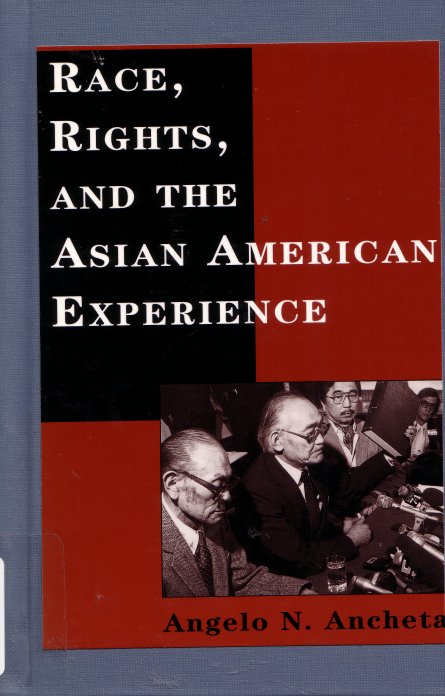
Race, Riots and the Asian American Experience, 2000

This is a book which examines the legal aspects of race in relation to Asian Americans. At times it's a little complex, but it's still an interesting book. Among the most interesting notes are:
”For most of the nation's history, Asian Americans have been treated primarily as constructive blacks. Asian Americans for decades endured many of the same disabilities of racial subordination as African Americans- racial violence, segregation, unequal access to public institutions and discrimination in housing, employment, and education.”
This is not just a WWII reference book, either, for the book sites examples of anti-Asian American violence up to the 1990's.
”The legal subordination of Asian Americans on the West Coast paralleled the treatment of African Americans in the South following Reconstruction: segregation was sanctioned and discriminatory laws abounded at all levels of government. Anti-Asian laws cane in three forms: (1) federal naturalization laws that imposed a racial barrier on Asian immigrants seeking United States citizenship; (2) federal immigration laws limiting migration from Asian and Pacific Island countries, and (3) state and local laws discrimination against Asians, often based on their ineligibility for citizenship. One variation of this discrimination was the wartime treatment of Japanese Americans, who were relocated and interned in concentration camps during World War II.”
The discrimination goes back a long ways in history, too, as the book notes that in 1860 California “banned Asians, blacks, and Native Americans from attending the public schools.”
Twenty years later, California enacted an “anti-miscegenation law” that prohibited marriages between whites and “Negroes, mulattoes or Mongolians.” People from the Philippines were included in the law fifty years later since they were members of the “Malay race.”
It is interesting to see how the law, which is supposed to be fair and just for all, can be used to justify and even enforce discrimination against any particular group of people. Remember that the founding of the nation was based on equal rights for white males; blacks were slaves and white women, although free, were officially second-class citizens and not allowed to vote. In fact, women didn't get the right to vote in this country until the 1920's, and that only after demonstrations, political actions, violence and imprisonment.
Blacks are those who have faced the greatest legal discrimination, of course, but notice that even Native Americans were included in the non-white legal control movement (and, indeed, they are still on “reservations” which are really modern-day forms of the internment camps.) The fight for the legal rights of any non-white group is a process that has to keep being fought over and over. The fight has become more complicated in present times, of course, with the anti-gay, anti-lesbian movement. This targets people of any race, including white, who are gay, lesbian, bisexual or transgendered. Thus, legal protection, at least according to some people, should only be given to only a portion of the whites and virtually no one else.
Although the country has made some advances it still has a great deal of distance to go before the terms “fair and equal treatment under the law” become an actual reality rather than a nice catch-phrase.
Main Index
Japan main page
Japanese-American Internment Camps index page
Japan and World War II index page
|